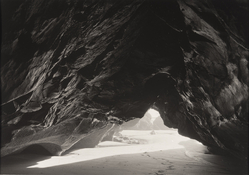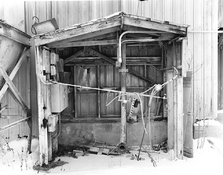chuckroast
Subscriber
@DREW WILEY I was specifically referring to HP5+ versatility with the scanning workflow. Again, this is the "analog" section but the way how we process films defines our requirements and, therefore, versatility.
Here's a flat (linear) scan of an extremely high contrast scene. The house is in a deep mountain shadow, and the hot tub area is burred even further, meanwhile the trees are hit by the direct sunlight which is even harsher at Tahoe elevation. There's no clipping. There's texture in all shadowed areas and the highlights are not blocked.
The original 16-bit ITFF can be edited to look like anything. The histogram is "smiling ear to ear" i.e. it contains more tonal values than any monitor or paper is capable of reproducing. From now on it's about deciding which information to throw away, and I have the full tonal scale to apply any kind of contrast curve I want.
I'm not criticizing T-Max films, only pointing out how versatile HP5 is.
View attachment 347696
Yes, but if I read @DREW WILEY's original point correctly, he's saying that the film cannot handle more than 11 stops or so, and you're forced to compress the scene SBR into those 11 stops of capture. At least I think that's what he means. If not, apologize ahead of time for my dumbness.
In the scene you provide above, you've mapped a very high SBR into a very small one centered around the middle of the tonal range with very low contrast. This can be achieved with almost any decent film with appropriate development techniques - two bath, compensating development, semistand, etc. I think the central question, though, is whether the film can innately capture the entire SBR without these compensation techniques. If my understanding of Drew's point is approximately correct, the claim is that HP5+ cannot, but Tmax can.








